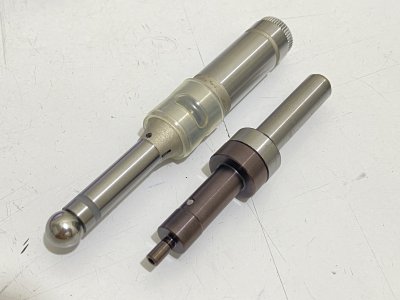I have been using the traditional mechanical edge finder for quite some time and quite happy with it's accuracy - within 0.02 mm in the resulting dimension of the workpiece. Just recently I bought an electrical edge finder at a very good price and after testing it a bit on my milling machine, I got an error that is either the same as that of the mechincal one or three times as much ( 0.06 mm ). I have no clue on why it is so. Can anyone throw in some thoughts ?

